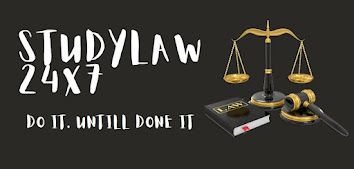In
this article we discussed about the Promissory Note including its
definition, essentials and types and distinction between Promissory Note and
Bill of Exchange
1.
Promissory Note
A
promissory note is an instrument in writing (not being a banknote or a
currency-note) containing an unconditional undertaking signed by the maker, to
pay a certain sum of money only to, or to the order of, a certain person, or to
the bearer of the instrument. [Section 4]
The
question, whether a particular document is a promissory note or not, has to be
decided with reference to-
(a)
the description of the instrument;
(b)
the language of the instrument taken as a whole;
(c)
the circumstances under which the document came to the executed;
(d)
the intention of the parties manifest on the face of the document, and
(e)
the surrounding circumstances.
All
these factors have a cumulative bearing on a proper construction of the
documents to determine whether it is a promissory note or not. [Rangaswami
v Govindaswamy, AIR 1981 Mad 434]
2.
Essential Ingredients of a Valid Promissory Note
- It must be in writing,
- It must contain an undertaking to pay:
- It must be signed by the maker;
- The undertaking to pay must be unconditional;
- The maker of the note must be certain;
- The sum payable must be certain;
- The promise should be to pay money, and money only;
- The payee must be certain.
3.
Types of Promissory Notes:
- Secured
Promissory Note: This type of note is backed by
collateral, such as real estate or other valuable assets. In the event of
default, the lender can seize the collateral to recover the outstanding debt.
- Unsecured
Promissory Note: Unlike a secured note, an unsecured
promissory note is not backed by collateral. The lender relies solely on the
borrower's promise to repay.
- Demand
Promissory Note: In this type, the lender can demand
repayment at any time, as long as proper notice is given to the borrower.
- Instalment
Promissory Note: This note requires the borrower to make
regular, scheduled payments over a specified period until the debt is fully
repaid.
4.
Conclusion
Promissory
notes play a significant role in facilitating lending transactions and
establishing the terms of debt repayment. They provide a structured framework
for borrowers and lenders to formalize their agreement and uphold their
financial commitments. Whether for personal loans, business transactions, or other
lending scenarios, promissory notes contribute to the smooth functioning of the
financial system by promoting transparency, accountability, and legal recourse
in case of default.
FAQ
(Frequently Asked Questions)
What
are the differences between Promissory Note and Bill of Exchange?
- In Promissory Note, there are only two parties, the maker and the payee. Whereas, in a Bill of Exchange, there are three parties to be specified, i.e., drawer, drawee and payee; though any two out of these three capacities may be filled by one and the someone.
- A Promissory Note can not be made payable to the maker himself. While, in a Bill of Exchange, the drawer and the payee may be the same person.
- In a Promissory Note there is an unconditional promise by the drawer to pay certain sum to the payee. On the other hand, in Bill of Exchange, there is an unconditional order to a drawee, to comply with the drawer’s direction as to payment.
- The liability of the maker of the Promissory Note is absolute because he unconditionally binds himself to pay. On the other hand, the obligation undertaken by the drawer of a bill of exchange is only conditional since he becomes a surety for payment by the drawer.
- The maker of the Promissory Note becomes the principal debtor. On the other hand, the drawee of a bill of exchange on acceptance becomes the principal debtor as he accepts the primary liability to pay according to the tenor of the bill of exchange.

.png)
.png)

.png)

No comments:
Post a Comment